
RMS Olympic: Heroic commercial liner with a kill count
RMS Olympic may be lesser known than her famous sister – RMS Titanic, but that doesn’t mean she couldn’t pack a punch. Having enjoyed a lengthy career at sea – surviving war and natural disaster – RMS Olympic may well have been the best, and strongest, ship there ever was
White Star Line took on the world with their Olympic-class ships. When the company launched RMS Olympic on October 20, 1910, they had no concept of having created history's most popular category of liner.
These globally-renowned vessels comprised of three stablemates – RMS Olympic, RMS Titanic and RMS Britannic – all designed to take the fight to White Star Line’s main rivals.
Cunard had the fastest ships in the world – with the Lusitania and Mauretania at their command – while Hamburg America and Norddeutscher Lloyd offered a fleet of vast liners famed for their luxurious accommodation.
It was a tall order to address these juggernauts of the Atlantic, but RMS Olympic was designed to spearhead an attack on the market like never before – opening the gates for sister ships Titanic and Britannic to follow in her wake.
With the Olympic class, White Star Line aimed to compete on both fronts and beat everyone in the process. The Olympic class ships would be large, fast, comfortable and opulently furnished. If you’re going to do it, do it right.
In Belfast, on that October morning of 1910, 40,000 tons of Olympic sped down the slipway. She was the largest liner of her time and boasted some of the most impressive fittings ever seen on a ship. The stakes had well and truly upped in the contest for being the best liner.
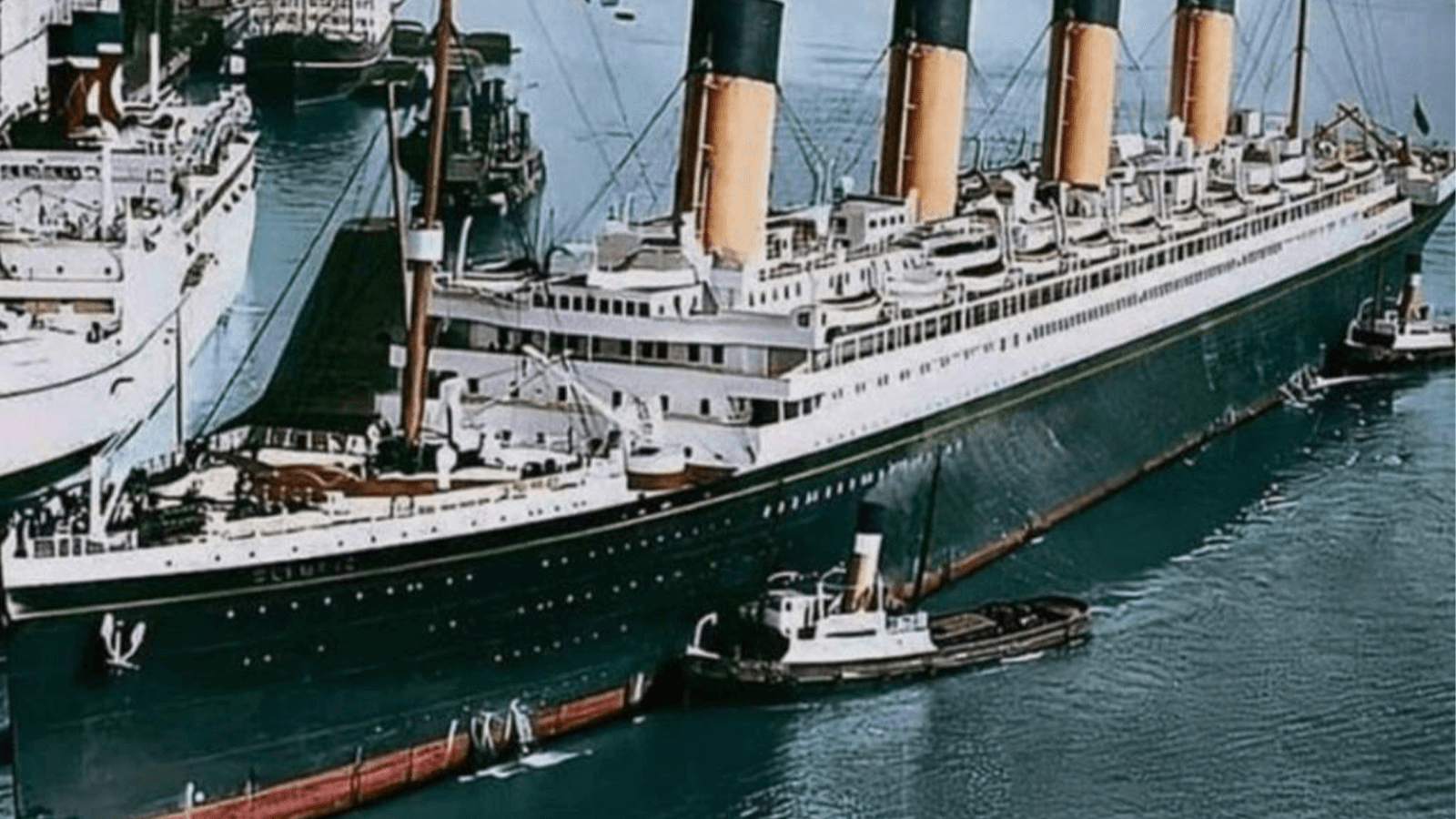
Although her sister ship RMS Titanic would become the most famous of the three ships in this class, Olympic would outlive both of her sisters by a great many years. Titanic met her end during her maiden voyage, whereas Britannic – allegedly – hit a sea mine when on active duty as a hospital ship; having never been used for passenger service.
Not only would RMS Olympic serve as a luxurious liner, she also served as a troop ship during World War One and survived numerous adrenaline-filled incidents, each one of which could easily have been the downfall of another, weaker, vessel.
To many, RMS Olympic is thought of as the best and strongest ship there ever was. After all, she was named ‘Old Reliable’ for not just one good reason – but various heroic reasons.
Key highlights from her career show just how magnificently awesome RMS Olympic was, and when you delve into her track record, it's clear she remains one of the only commercial liners to boast an enemy kill count – long before video games such as Call of Duty made it fashionable.

The unsinkable reputation: Collision with HMS Hawke
In September 1911, RMS Olympic faced her first true test of strength when, on only her fifth voyage, she collided with the Edgar-class British cruiser HMS Hawke in the English Channel. Back in Southampton, Olympic’s battle scars provided the White Star Line with a major headache. The hole above the waterline extended for some 14ft. While docked, and with several workers standing within Olympic at the point where this gap resided, the men appeared microscopic. The damage was incredibly vast. Such naivety can perhaps be mocked now that we know what happened to Titanic. However, the ‘unsinkable’ reputation is understandable when considering that Olympic had not sunk after being rammed by a naval bruiser – whose sole purpose was to take down other vessels.
Of all the ships to run into, HMS Hawke was not ideal – for this Royal Navy cruiser had armour several inches thick and a bow specifically designed to sink other ships. Hawke was the equivalent of an ocean-going murderer, hyped on steroids and crafted to sink anything that came into contact.
It was this murderous bow that pierced the hull of Olympic. The damage incurred by the White Star Line flagship was considerable; two holes gauged into the liner’s hull, one above and one below the waterline, alongside a twisted propeller shaft.
Two of Olympic’s watertight compartments flooded while the shell plating around D deck was driven back eight foot into the ship. Thankfully there were no casualties. Afterwards, Olympic was able to proceed gingerly to Southampton under her own power.
Meanwhile, to the surprise of many, HMS Hawke had faired far worse from her run-in with RMS Olympic. Her bow was severely blunted and folded back on itself. Hawke almost capsized.
Externally, 11 plates had been damaged with eight completely beyond repair and consequently in need of replacement.
This caused several issues. The repair of Olympic took her out of service for over two months, losing the White Star Line valuable business during this time. Additionally, propellers and other parts from Titanic – still under construction – had to be passed across to Olympic, delaying Titanic’s entry into service.
And much like pouring fuel onto an already burning fire, the trial into the incident afterwards declared that HMS Hawke was not at fault. The White Star Line appealed but in vain.
However, there was at least a silver lining in the mess. The very fact that Olympic had survived such a violent collision with a naval ship specifically designed to sink other ships gave Olympic and her design the ‘unsinkable’ reputation.
This would famously cause utter disbelief amongst crew and passengers when it was realised that Titanic would founder after colliding with an iceberg in April 1912. 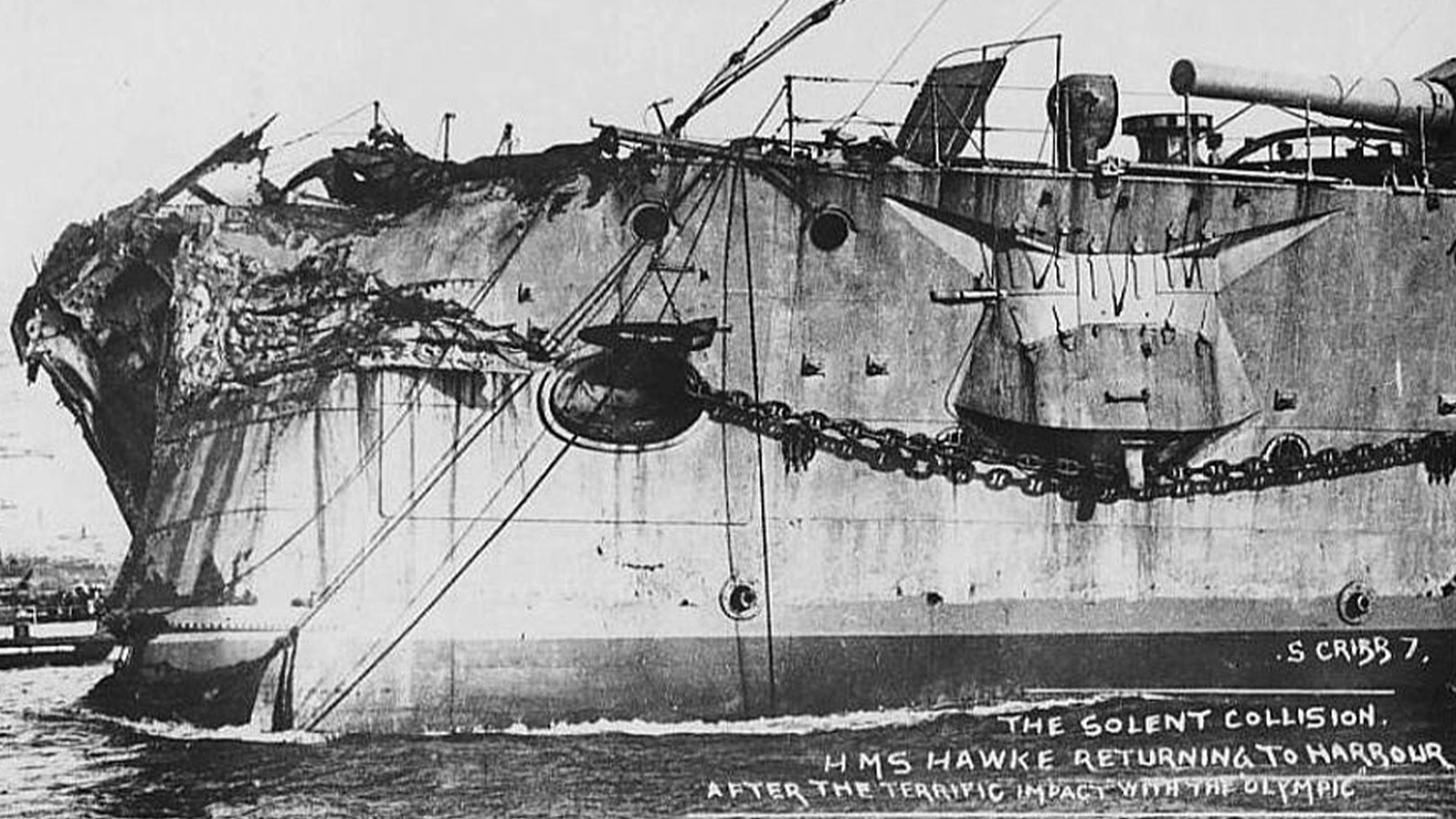
Meantime, before Titanic foundered, the ‘unsinkable’ reputation would likely have been good for business. Who wouldn't want to sail on a ship that defied even the most fearsome of Military equipment?
On November 30, 1911, Olympic returned to service, undefeated and ready to blaze a trail across the Atlantic once more. The problem was – a war was brewing; the first war set to engulf the world, and it would permanently change RMS Olympic's story.
An exemplary troopship: Olympic joins the Admiralty
Some three years later, with The Great War (later to be known as World War One) rampaging across Europe, RMS Olympic received an urgent request to join the Admiralty.
The White Star liners had initially continued their commercial work throughout the early hostilities for there were a great many Americans who wished to return home as the situation worsened in Europe.
To increase safety, Olympic was painted grey and her portholes had been blocked while she followed strict blackout precautions at night. As the war developed, her British port of call changed from Southampton to Liverpool, and then Greenock in Scotland.
Understandably, as the threat from German U-boats became increasingly ominous, Olympic was withdrawn from service in October 1914 and temporarily laid up. She wouldn’t rest for long.
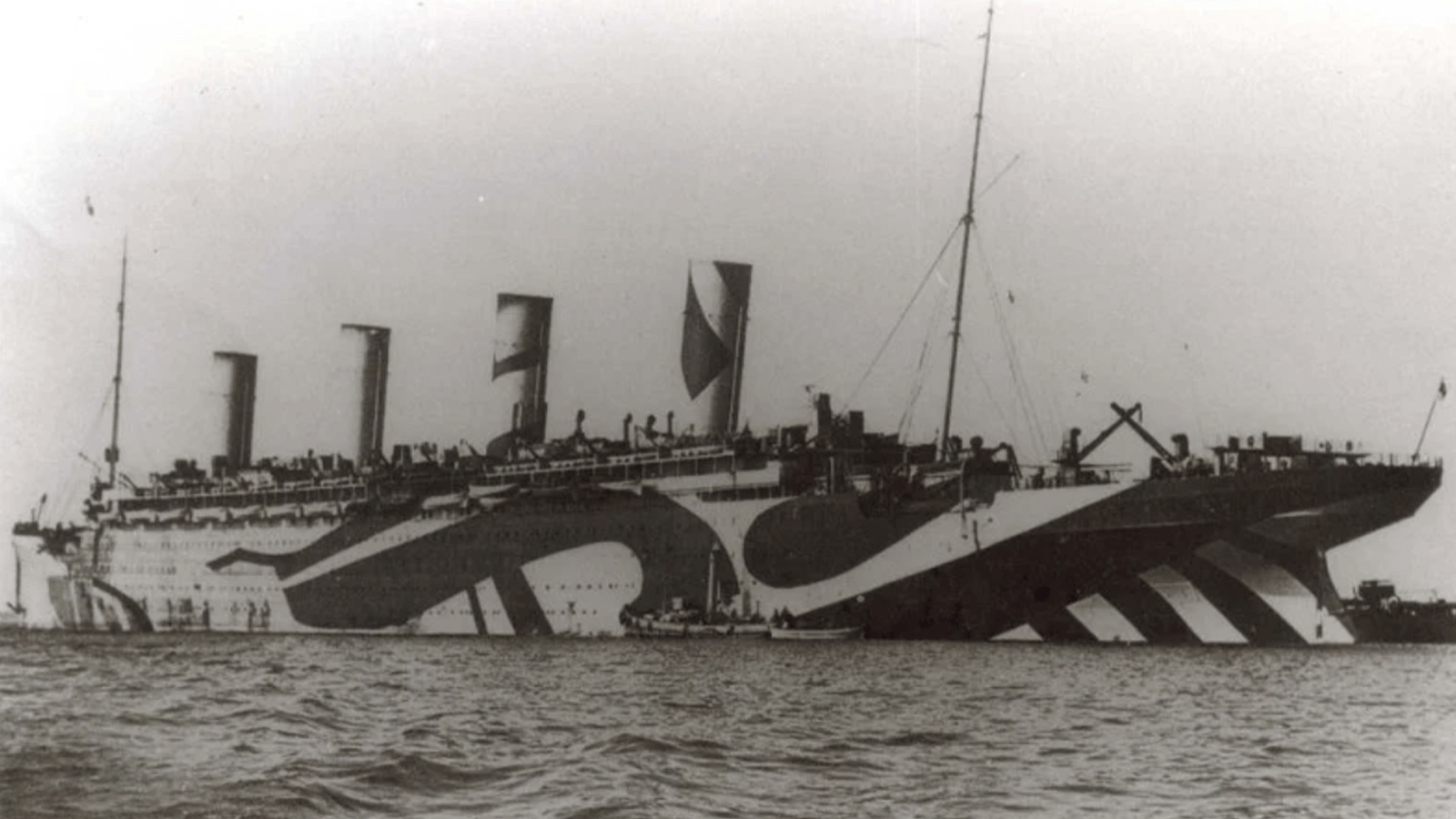
Olympic’s call for duty came in May 1915. The Admiralty wished her to transport troops alongside the Cunard liners Mauretania and Aquitania - the latter of which would also serve in WWII.
Olympic exchanged her luxury fittings for 12 pound cannons and naval artillery guns. Renamed HMT Olympic, she was now a spectacular sight thanks to her newly-acquired dazzle camouflage in mixed shades of brown, blue and white.
Although still a liner underneath, it was an impressive transformation. With her vast size and powerful weaponry, Olympic was a formidable enemy.
Captain Betram Hayes, previously of the Adriatic, was given command of the ship and, in September 1915, HMT Olympic set sail from Liverpool with 6,000 British troops aboard who were due to participate in the Gallipoli Campaign.
HMT Olympic also transported American and Canadian troops across the Atlantic, weaving via lengthy zig-zag patterns as she went to confuse the enemy and dodge trouble. This may have seemed inefficient but a single torpedo could have been a ship’s downfall.
This had been tragically demonstrated in the very month that Olympic had been acquisitioned when Cunard’s RMS Lusitania was attacked by a German U-boat. After only one blow, Lusitania had terrifyingly sunk in only 18 minutes, with 1,199 of her passengers and crew killed.
Despite the ever-present danger, Olympic safely delivered thousands of troops during World War One. One of her many ports of call was Halifax Harbour where both military personnel and locals regarded Olympic fondly enough to give her the nickname ‘Old Reliable’; thanks to her admirable war effort.

Dare anyone cross HMT Olympic’s path? Taking out SM U-103
In the early hours of May 12, 1918, Olympic faced her most notable threat of World War One.
At the time, she was powering through the English channel, on route to France, with a convoy of American troops onboard. As the first light of dawn rose in the east, the crew of Olympic spotted the dreaded silhouette of a German U boat against the horizon in front of them. This submarine had already sunk eight ships and now it had Olympic in its crosshairs.
In the same way that orders were needed immediately aboard Titanic when look-outs notified the bridge of an iceberg dead ahead, a decision on what to do had to be made and quickly. Any delay could lead to the demise of Olympic and numerous deaths aboard.
A shot fired out from Olympic towards U-boat SM U-103 but the forecastle gun could not be depressed down enough to obtain the correct trajectory. Subsequently, the shot went over its target, the crew of which now knew Olympic was onto them, and into the water behind.
Captain Hayes could not delay. It would take SM U-103 only a mere few moments to fire a torpedo at Olympic. Despite the risk involved and knowing full well what had happened to Titanic when she’d struck an iceberg, Captain Hayes opted for a risky but ultimately brave decision. Olympic was ordered to turn around at once and thunder straight towards the submarine.
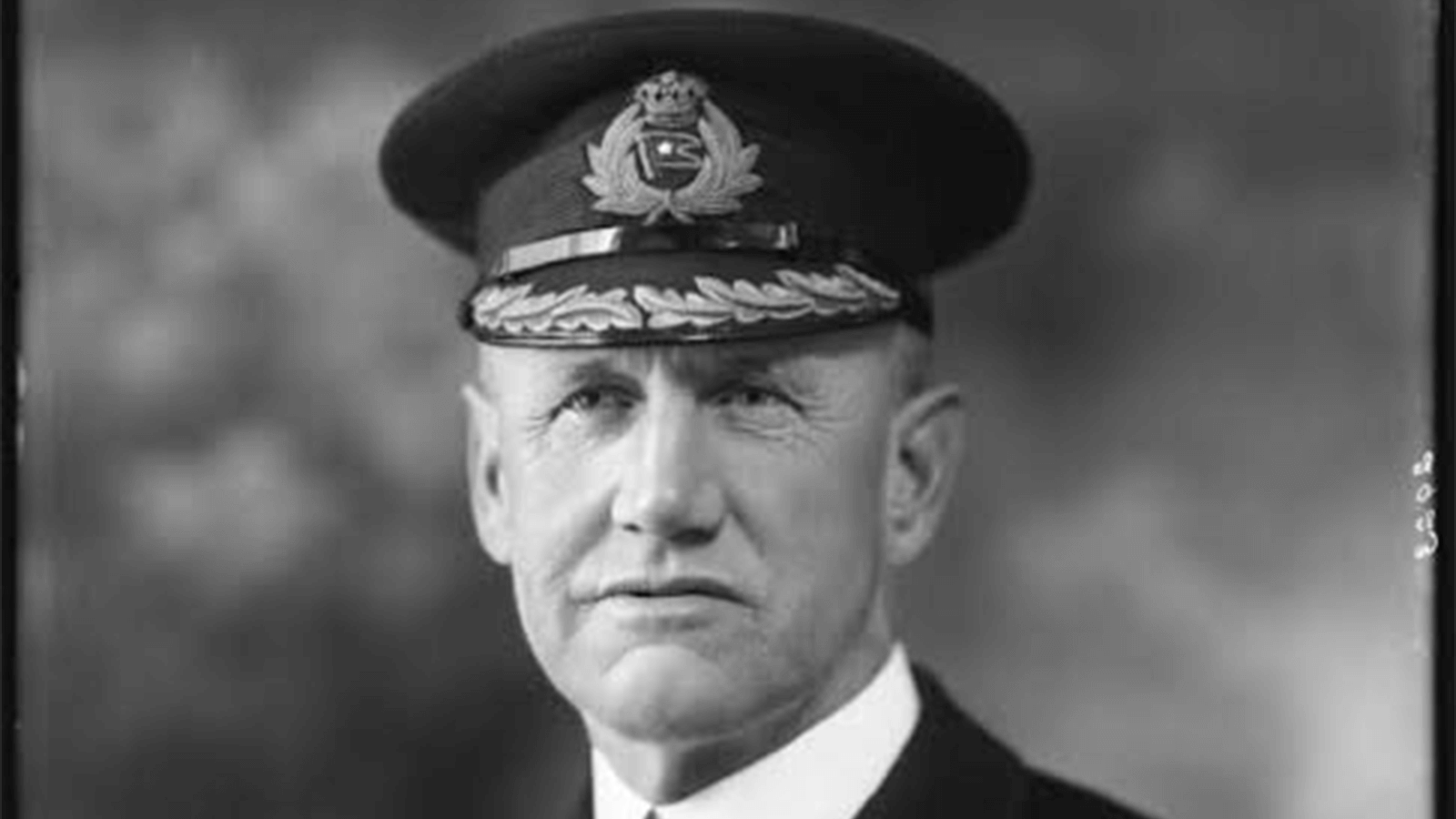
As she did so, Olympic’s gunners rained a cacophony of fire down towards the Germans while the ship’s engines gave everything they had. Striking the submarine could sink Olympic but not striking the submarine would most definitely make them a sitting target. Olympic’s hull sped through the water like an enormous knife.
Sensing the incoming attack, SM U-103 crash-dived to 30m but it was too little, too late. With impressive precision on timing, Captain Hayes ordered the helm put hard to port. This swung the prow of Olympic violently to starboard, delivering a swinging blow to the submarine and hammering all 46,359 tons of Olympic on top of the 800 ton sub – as showcased by the 2022 German film Operation Seawolf*.
Olympic’s fixtures juddered slightly as her crew ran to vantage points to see what had happened. In the waters below, the wreckage of SM U-103 – almost standing up on end –passed by Olympic’s bridge.
As the wreckage drifted further back, enthusiastic open fire erupted from the gunners on Olympic’s poop deck, perhaps just for good measure. It is unclear if the men at the rear of Olympic knew what had happened upfront but either way their own attack hailed very much like ‘and take that!’
It was not necessary. Olympic had hit SM U-103 like a ton of bricks. In fact a ton of bricks would have been far lighter. SM U-103 had been hit like 46,359 tons of Olympic while her propeller had sliced through the submarine’s pressure hull.
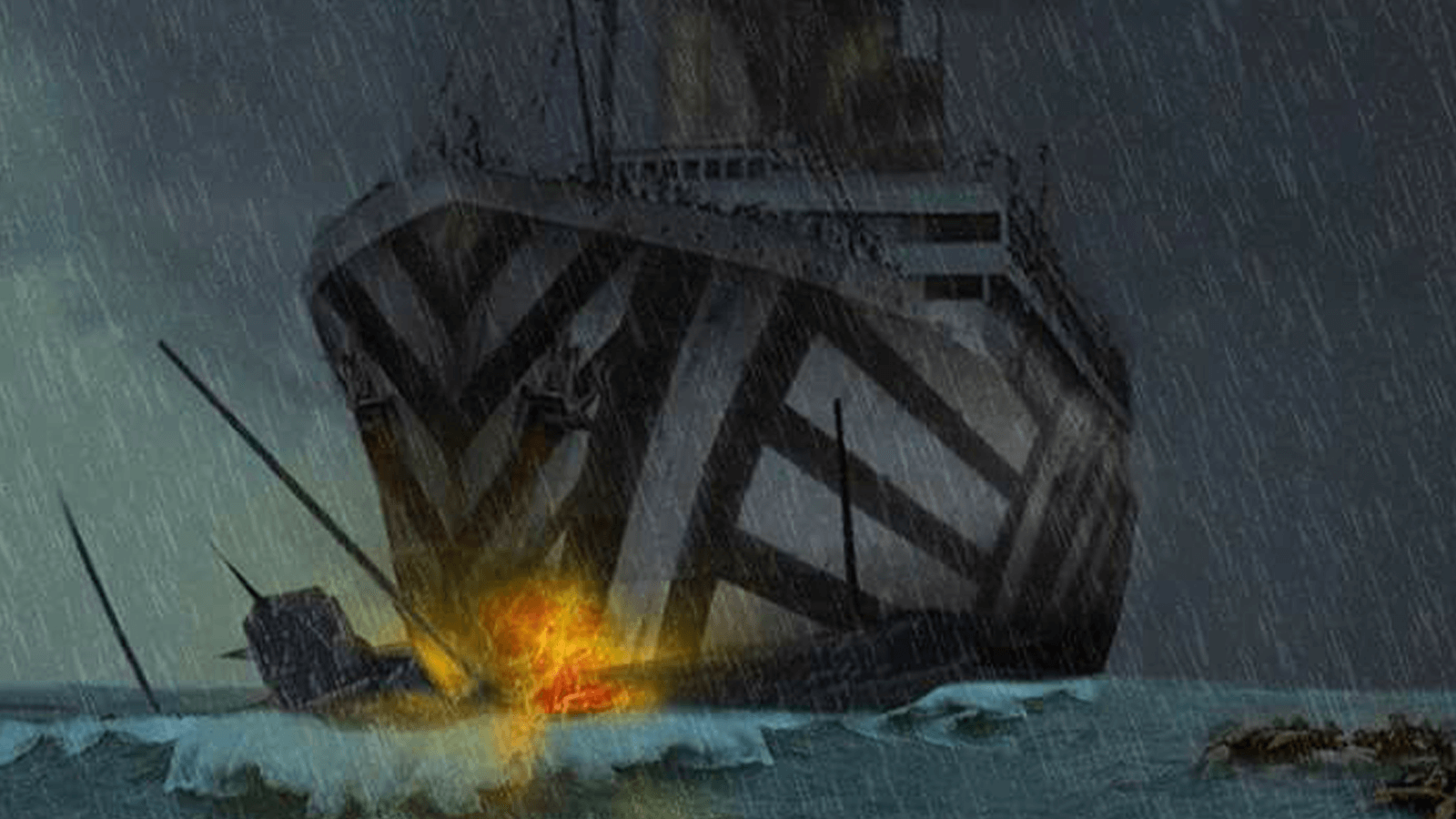
The German crew had blown the ballast tanks before scuttling and abandoning their craft. 31 of the submarine’s crew survived the incident, nine lost their lives.
Olympic did not stop to pick up any survivors, leaving instead a trail of wreckage and wet Germans behind her. Stubbornly, Olympic continued on to Southampton, owing the enemy nothing. In Olympic’s defiant wake, the American destroyer USS Davis stepped in, picking up those in the water.
Upon inspection at Southampton, two of Olympic’s hull plates were found to be dented, her starboard paravane chains had been torn away and her prow had been twisted 8ft to port. Olympic’s knife edge prow had taken a massive hit but remarkably was not breached.
Yet again, Olympic had proven to be ‘unsinkable’.
Elsewhere, about halfway between Cornwall and France, SM U-103 sunk to a depth of 90m in the English Channel. Dives to the wreck have subsequently found that SM U-103 had been preparing to torpedo Olympic but that the crew had not had time to flood the torpedo tubes and fire.
For his quick thinking and bravery, Captain Hayes was awarded the DSO (Distinguished Service Order) in 1919 for ‘valuable services in connection with the transport of troops’ - while a lookout who had spotted the submarine received the DCM (Distinguished Conduct Order).
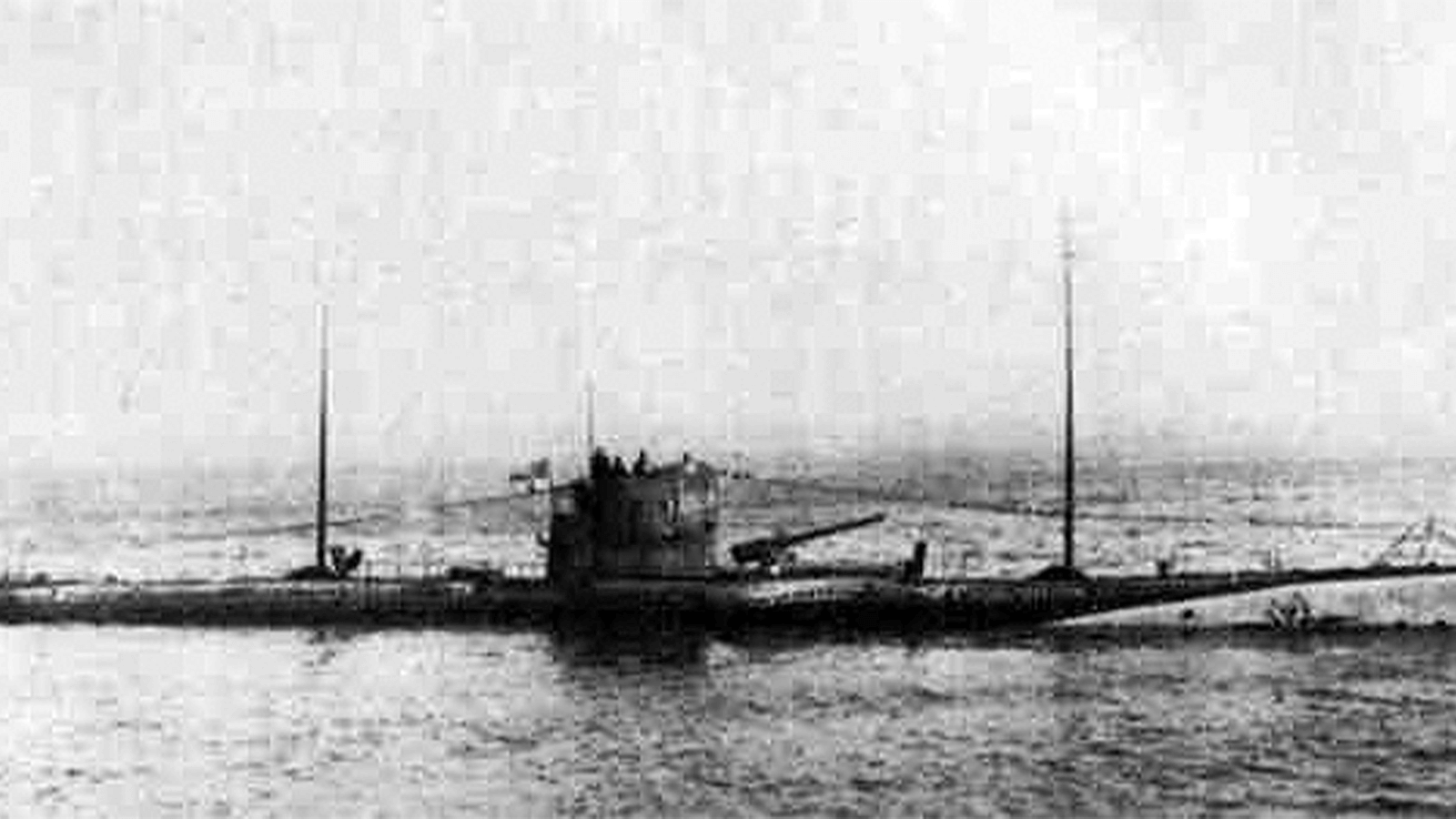
It had been a moment of glory for the handsome White Star Line ship. To thank the ship and her crew for their safe delivery, the 59th Regiment United States Infantry – who’d been aboard during the incident – paid for a commemorative plaque that noted the incident. This was proudly displayed in one of Olympic’s lounges.
Throughout the remainder of World War One, HMT Olympic held the distinction of being the only merchant ship to sink an enemy warship during the war.
Theoretically, it can be argued that the actions of HMT Olympic may have helped to shorten the war for, by taking out SM U-103 and continuing to deliver troops to Europe, the German army was forced back from land they’d previously been occupying before finally agreeing to the Armistice in November 1918.
* Note: Some inaccuracies present in film portrayal (Operation Seawolf, 2022)

Shaken but not stirred: The 1929 Grand Banks earthquake
Over a decade after Olympic had defeated a German U-boat, she was confronted with an altogether different form of danger, this time from two and a half miles below.
At around 3.30pm on November 18, 1929, as Olympic was crossing the Atlantic towards New York, a violent vibration was felt through much of the ship. This strange sensation was felt for over two minutes, causing worry among many of the liner’s passengers.
What was particularly odd, and what didn’t help, was that when the vibration began, Olympic was just a few degrees away from Titanic’s last known position. The crew thought they may have struck an object, blown a boiler or lost a propeller while some passengers pondered if they’d had a supernatural experience relating to Titanic.
An urgent inspection of Olympic got underway but nothing was found amiss. Thankfully it didn’t take long for the mystery to be cleared up. Reports via Olympic’s radio relayed that an earthquake had occurred, the epicentre of which was located near the Grand Banks of Newfoundland.

The event was subsequently named the Grand Banks earthquake, recording a notable magnitude of 7.2. The earthquake had triggered a huge landslide under the sea that saw over 48 cubic miles of earth shift, while vibrations powered their way all the way out to New York City and up to Canada’s Montreal.
Three tsunamis followed with waves of up to eight metres tall. These hit the Burin Peninsula with force, killing almost 30 people and destroying many coastal communities with thousands losing their homes.
Some six hours later, a seismograph in Portugal, over 2,500 miles away in Europe, would also detect the quake’s vibrations. Even now, the Grand Banks earthquake remains unrivalled for the destruction she caused within the locale.
Meanwhile, aboard Olympic, only the mail room had a problem to report – their electrical lights had gone out. Shortly afterwards, those who had been within Olympic’s lavish first-class lounge, which had been temporarily serving as a cinema that afternoon, found themselves asking what all the fuss was about.
Remarkably, while the world around them had practically seemed to collapse, thanks to RMS Olympic’s capacity to be a true pillar of strength, they hadn’t felt a thing.
* The lead image of this article was painted by Alexandr Filin. See if you can nab a copy for your wall. It's completely worth it!












